| Sőrés Zsolt írása az Új Zenéről Program: október 3. Zoambo Zoet Workestrao (Ljubljana) Phill Niblock (New York) Tudósok (Újvidék-Szentendre) Harry den Hartog (Rotterdam) Paranoise (Budapest-Bécs) Leopold Bloom (Szombathely)
október 4. Plan Kruutntoone (Groningen) Ambiance 21(New York) Strahuljari (Sezana) Tóth Gábor és Tóth Pál (Budapest) Marko Brecelj (Szarajevó-Koper) Király Erno (Újvidék) belépô: 500 ft/nap tickets: 500 huf/day info: Mi a célja egy fesztiválnak? Különösen "még egy" fesztiválnak? Új zenét mutatni be? Van egyáltalában "új zene"? Mi lehet még új a nap alatt? Hisz a "kísérleti", "rögtönzött", "új", "kortárs", "aktuális", "minimális", "konceptuális" stb. jelzőket már teljesen elcsépelhettük, de a mindezen jelzőkkel általában körülírt zenét még nem. Azt szeretnénk, hogy az ilyen terminológiai, kronológiai, esztétikai besorolások ne legyenek akadályai bármilyen kifejezési formák kibontakozásának, találkozásának és a különböző formák és tapasztalatok kölcsönös egymásra hatásának. E fesztivál megszervezésével az a célunk, hogy helyet és teret biztosítsunk azoknak a releváns és aktuális zenei szerzőknek, előadóknak valamint alkotásaik bemutatásának és népszerűsítésének, akiket és amelyeket kifejezési formától és esztétikai identitástól, műfaji és stílusbeli jellemvonásaiktól, származási közegük kulturális vagy szociális vonatkozásaitól függetlenül fontosnak érzünk művészeti minőségük vagy regionális kulturális szerepük alapján. A "Változások kora" a legkevesebbet a fiatalok kreatív zenei törekvéseinek s fórumainak hozott. Ezért szándéka e fesztiválnak, hogy a fiatalok irányában nyisson, s nekik mutassa be az Új Zenét olyan szemszögből, amely számukra közvetlen és átütő. A rockzene, amely az urbánus zene egyértelműen legmarkánsabb jelensége, nagy hatást gyakorolt a kortárs "magas" művészet történelmi alakulására is. Az üzleti manipulációk hatása ellenére, amelyeknek a rock saját, aránylag rövid történelmi fejlődése során oly sokszor volt kitéve, egyes túlélő formáiban megőrizte életképességét és szociális-kulturális, valamint művészeti-alternatív szerepét és jelentőségét, fel tudta használni más zenei műfajok tapasztalatait, be tudta építeni értékrendjébe a hiteles szubkultúra és ún. "magas" művészet elemeit, s ezekben a formáiban még mindig erős hatással bír a közönség szellemileg nyitottabb és rugalmasabb, annak is különösen fiatalabb részére frissességével és közvetlenségével. What's the aim of a festival? Especially of "another" festival? To present new music ? Is there any "new music"? Is there anything new in music at all? Since the terms experimental, improvised, new, contemporary, actual, minimal, conceptual etc. have been hackneyed much, but the music usually described by them hasn't. We wouldn't like these terminological, chronological, esthetical classifications to become obstructions for the different forms of expressions to blossom out, meet, and to have mutual influences. Our aim by organizing this festival is to give place and opportunity for introduction and promotion to those relevant and current music authors, performers and their works who we regard as being important due either to their artistic quality or regional cultural role, no matter of their forms of expression or esthetic identity, types of their genre or style, or the cultural and social context of their place of origin. The "Epoch of changes" brought the least to the youth and to the forums for their creative endeavor. Therefore is the aim of this festival to make an opening step towards them by presenting the New Music to them from an aspect, which is the closest and most direct to them. Rock music, which is out of question the strongest phenomenon of urban music, had a great influence on the historical development of the so-called "high" art as well. In spite of the business manipulations, that burdened the rock during its relatively short history, it managed to save its vitality and social-cultural and artistic-alternative role in numerous survived forms managing to use the experience of other music genres and to incorporate them into its own system of values the elements of the authentic sub-culture and "high" art, and it still has a strong impact on the audience in these forms of its, onto the more open and more flexible, especially younger part of it through its freshness and immediacy. |
october 3rd.Zoambo Zoet Workestrao (Ljubljana)
23,00
"WORKING-CLASS INTERNET POST HARDCORE " A trio
with an independent melodic bass, a semi-acoustic experimental fat guitar, a tough and
broken kind of Macedonian drum, and its vocals are two shouting panslavic screams. Phill Niblock (New York) 22,00 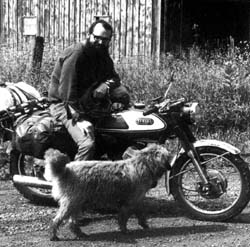 Zeneszerzô és filmalkotó, intermédia alkotó A 60-as évek közepétôl lép
fel koncertjeivel és performance-eivel többek között a New York-i Museum of Modern
Art-ban, Kitchen-ben, Whitney Museum-ban.
Composer and filmmaker. Has been performing
since the mid 60-s with concerts and performances in the Museum of Modern Art, Kitchen,
Whitney Museum and numerous other placesand festivals. One of most important intermedia
artists today. Zeneszerzô és filmalkotó, intermédia alkotó A 60-as évek közepétôl lép
fel koncertjeivel és performance-eivel többek között a New York-i Museum of Modern
Art-ban, Kitchen-ben, Whitney Museum-ban.
Composer and filmmaker. Has been performing
since the mid 60-s with concerts and performances in the Museum of Modern Art, Kitchen,
Whitney Museum and numerous other placesand festivals. One of most important intermedia
artists today.Tudósok/Scientists (Újvidék-Szentendre)21,00 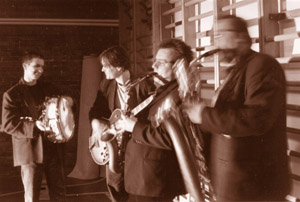 Zenéjük olyan, mint egy gondosan hegyesre faragott, pontosan irányzott cövek
Drakula szívében. Kemény, könyörtelen, gyilkos ipari dzsesszt játszanak, a
legfehérebb zajt, a legmegátalkodottabb kakofóniát, pontosan azt a ritmus-, hangzás-,
frekvenciatartományt, amely el tudja feledtetni a harakirizô világ halálhörgését.
Their music is like a very neatly
carved peg in Dracula's heart. Tudósok play a hard, merciless, murderous industrial jazz,
the whitest noise, the most obstinate cacophony, exactly that domain of rhythm, sound and
frequency, which can make you forget the death rattle of the world committing hara-kiri. Zenéjük olyan, mint egy gondosan hegyesre faragott, pontosan irányzott cövek
Drakula szívében. Kemény, könyörtelen, gyilkos ipari dzsesszt játszanak, a
legfehérebb zajt, a legmegátalkodottabb kakofóniát, pontosan azt a ritmus-, hangzás-,
frekvenciatartományt, amely el tudja feledtetni a harakirizô világ halálhörgését.
Their music is like a very neatly
carved peg in Dracula's heart. Tudósok play a hard, merciless, murderous industrial jazz,
the whitest noise, the most obstinate cacophony, exactly that domain of rhythm, sound and
frequency, which can make you forget the death rattle of the world committing hara-kiri.Harry den Hartog (Rotterdam) 20,30
The master of bright fractal boogie-woogie chansons. A
deep drilling accompanied by a neat and attacking harmonica with a grotesque singing and
details of make-up that bring you to the cataclysm. Paranoise (Budapest-Bécs) 19,30
Programmed and improvised noise-tango and a
cobalt-saxophone in the gates of distorsion. The formatio of Walter hollinetz and Gyorgy
Arvai with friends. Noise, improvised, acoustic sound with computer-technology. Leopold Bloom (Szombathely) 19,00
The character of James Joyce in his "Ulysses",
the advertising-agent Leopold Bloom (Virag Lipot) with Hungarian origin, starts off his
(not)everyday travel, and the Leopold Bloom magazine/assembling, which has been published
in 75 issues of original works for the fourth year will start off its voyage and get to
Budapest in common with the spirit of the roman. october 4th. Plan Krutntoone (Groningen) 23,00
Tough, poetical, simple music. And great at the same
time. Young Dutch: a hard but pleasantly moving bass,
pushing-pulling-jumping drums, a cutting-drilling guitar, a quicksilver-rising saxophone
and a singing from a lost lifeboat. Ambiance 21 (New York) 22,00
The background music of the Last Judgment. Yellow drums
of hell. Bionic bass. Subsonic counterattack. Hypnosis. Violence. Revenge. Total destroy.
Cybersex. Digital attitude. The conquering of Nature. Africa from New York to
St.Stalingrad. Strahuljari (Sezana) 21,00
Barely eighteen, talented, humorous, unburdoned,
dertermined musicians. Grotesque ornaments and pimples sprinkled above the melodic drive,
which makes their free and relaxed perfoming strong and pleasant, premature and childish
at the same time. Tóth Gábor és Tóth Pál (Budapest) 20,30
To deconstruct sounds and construct them again is a
rising of a new world. Among this world each sound - whether natural, electronic, analog
or digital, harmonic or noise is of equal value, as the "unsounding", the
silence is at the same time. Marko Brecelj (Szarajevó-Koper) 20,00
A failed student of physics and composer of film/music
with a Golden Palm award. In 1975 with his band Buldozer made quite a big draft in former
Yugoslavia concerning the term rock-music. With later groups - Zlatni Zubi (Golden teeth),
Marjanov Cudni Zajec (Marjan's Strange Rabbit), Beli Crnci (White Negroes), Javna Vaja
(Official Exercise) managed to stay "under the ground". Király Ernô (Újvidék) 19,00
The dreamer and constructor of Tablophone and Zitherphone instruments, on which he performs his own compositions using the most extravagant experiences of the avant-garde language of performance. Has had several records published (the latest for Recommended Records) that brought him the reputation as one of the leading composers in contemporary music and classical music avant-garde today. |
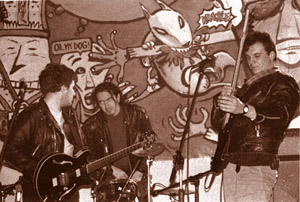 "PROLETÁR
INTERNET POST HARDCORE " Egy trió, melynek basszusa független és melodikus
vonalú, fél-akusztikus gitárja kövér és kísérletezo, dobja sűrű és tört, mint
a macedón népzene, s két éneke üvölto pánszláv sikoly.
"PROLETÁR
INTERNET POST HARDCORE " Egy trió, melynek basszusa független és melodikus
vonalú, fél-akusztikus gitárja kövér és kísérletezo, dobja sűrű és tört, mint
a macedón népzene, s két éneke üvölto pánszláv sikoly.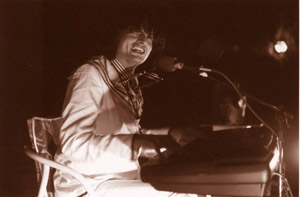 A
szintetizátorok fénylo slágereinek agyalapi boogie-woogie nagymestere. Mélydarálás
egy pedáns és gyorsbevetésu szájharmonika kíséretében, groteszk énekléssel és
olyan fineszekkel, amelyeket a smink éloben a kataklizmáig fokoz.
A
szintetizátorok fénylo slágereinek agyalapi boogie-woogie nagymestere. Mélydarálás
egy pedáns és gyorsbevetésu szájharmonika kíséretében, groteszk énekléssel és
olyan fineszekkel, amelyeket a smink éloben a kataklizmáig fokoz.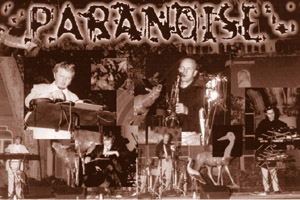 Programozott
és rögtönzött zajtangó és kobaltszaxofon a torzulás kapujában. Walter Hollinetz
és Árvai György formációja vendégeikkel. Noise, improvizáció, akusztikus hangzás,
computer-technika.
Programozott
és rögtönzött zajtangó és kobaltszaxofon a torzulás kapujában. Walter Hollinetz
és Árvai György formációja vendégeikkel. Noise, improvizáció, akusztikus hangzás,
computer-technika.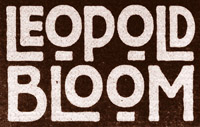 James Joyce
'Ulysses' cím| regényének a szereplôje, Virág Lipót azaz Leopold Bloom
reklámügynök mítoszi-hétköznapi odisszeája , s a nevét viselô, negyedik éve 75
példányban megjelenô, nagyrészt eredeti, szignált munkákat közlô 'Leopold Bloom'
művészeti folyóirat-assembling a regény szelleméhez híven vándorútra kel, s
megérkezik Budapestre.
James Joyce
'Ulysses' cím| regényének a szereplôje, Virág Lipót azaz Leopold Bloom
reklámügynök mítoszi-hétköznapi odisszeája , s a nevét viselô, negyedik éve 75
példányban megjelenô, nagyrészt eredeti, szignált munkákat közlô 'Leopold Bloom'
művészeti folyóirat-assembling a regény szelleméhez híven vándorútra kel, s
megérkezik Budapestre.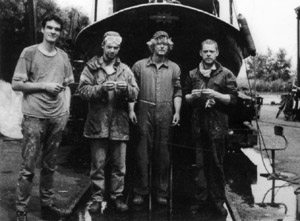 Tömény,
költôi, egyszerű zene. És nagyszerű. Fiatal hollandusok: élvezettel kínosan
elôremozdító basszus, toló-húzó-átugrató dob, vagdaló-szabdaló gitár,
higanyemelgetô szaxofon és egy elveszett mentôcsónakról üvöltô ének.
Tömény,
költôi, egyszerű zene. És nagyszerű. Fiatal hollandusok: élvezettel kínosan
elôremozdító basszus, toló-húzó-átugrató dob, vagdaló-szabdaló gitár,
higanyemelgetô szaxofon és egy elveszett mentôcsónakról üvöltô ének. 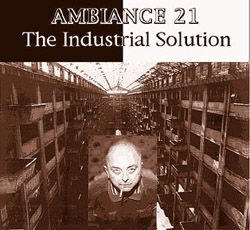 Az Utolsó
Itélet háttérzenéje. A Pokol sárga dobjai. Bionikus basszus. Szubszónikus
ellencsapás. Hipnózis. Erôszak. Bosszú. Teljes megsemmisítés. Cybersex. Digitális
attitűd. A természet meghódítása. Afrika New Yorkból St. Sztálingrádnak.
Az Utolsó
Itélet háttérzenéje. A Pokol sárga dobjai. Bionikus basszus. Szubszónikus
ellencsapás. Hipnózis. Erôszak. Bosszú. Teljes megsemmisítés. Cybersex. Digitális
attitűd. A természet meghódítása. Afrika New Yorkból St. Sztálingrádnak.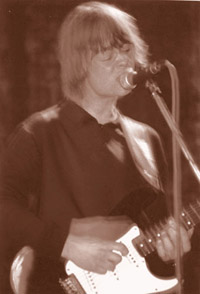 Alig
nagykorúak, tehetségesek, szellemesek és egyáltalán nem terheltek, önfejuek,
zenészek. A pszihodélikus melódiai drive felett groteszk díszek és pattanások vannak
elszórva, ami a teljesen felszabadult és laza elôadásukat erôssé és kellemessé,
koraéretté és gyermekivé teszi egyszerre.
Alig
nagykorúak, tehetségesek, szellemesek és egyáltalán nem terheltek, önfejuek,
zenészek. A pszihodélikus melódiai drive felett groteszk díszek és pattanások vannak
elszórva, ami a teljesen felszabadult és laza elôadásukat erôssé és kellemessé,
koraéretté és gyermekivé teszi egyszerre.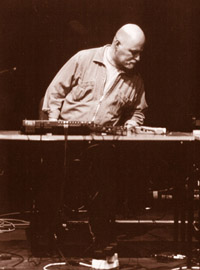 A hangokat
elemeikre bontani és újból felépíteni - egy új világ létrehozását jelenti. Ebben
az új hangzóvilágban minden megszólaló hang - legyen bár természetes,
elektronikusan létrehozott, analóg, vagy digitális, harmonikus, vagy zaj-zörej -,
egyenértékű, mint ahogy a 'meg nem szólalás', a csönd is egyenrangú elem.
A hangokat
elemeikre bontani és újból felépíteni - egy új világ létrehozását jelenti. Ebben
az új hangzóvilágban minden megszólaló hang - legyen bár természetes,
elektronikusan létrehozott, analóg, vagy digitális, harmonikus, vagy zaj-zörej -,
egyenértékű, mint ahogy a 'meg nem szólalás', a csönd is egyenrangú elem.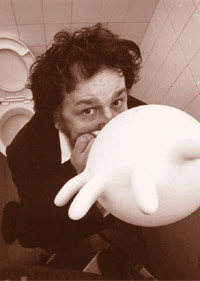 Bukott
fizika-hallgató, aranypálmás filmzene-szerzo. A Buldozer zenekarral 1975-ban
meghuzatoztatta Jugoszlávia területén a rockzene fogalmát. Késobbi zenekaraival -
Zlatni Zubi (Aranyfogak), Marjanov cudni zajec (Marjan furcsa nyula), Javna Vaja
(Nyilvános gyakorlat) - sikerült marginalitásban maradnia.
Bukott
fizika-hallgató, aranypálmás filmzene-szerzo. A Buldozer zenekarral 1975-ban
meghuzatoztatta Jugoszlávia területén a rockzene fogalmát. Késobbi zenekaraival -
Zlatni Zubi (Aranyfogak), Marjanov cudni zajec (Marjan furcsa nyula), Javna Vaja
(Nyilvános gyakorlat) - sikerült marginalitásban maradnia.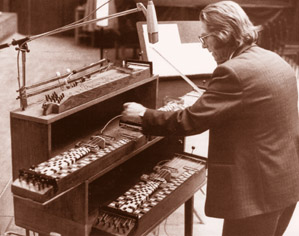 A citrafon és
a tablofon megálmodója és megépítôje, amelyeken saját műveit adja elô az
avantgárd zene legmesszemenôbb irányzatainak nyelvi sajátságait alkalmazva. Több
lemeze jelent meg, amelyek a klasszikus zenei avantgárd nemzetközileg is elismert
jelentôs képviselôi közé emelték.
A citrafon és
a tablofon megálmodója és megépítôje, amelyeken saját műveit adja elô az
avantgárd zene legmesszemenôbb irányzatainak nyelvi sajátságait alkalmazva. Több
lemeze jelent meg, amelyek a klasszikus zenei avantgárd nemzetközileg is elismert
jelentôs képviselôi közé emelték.